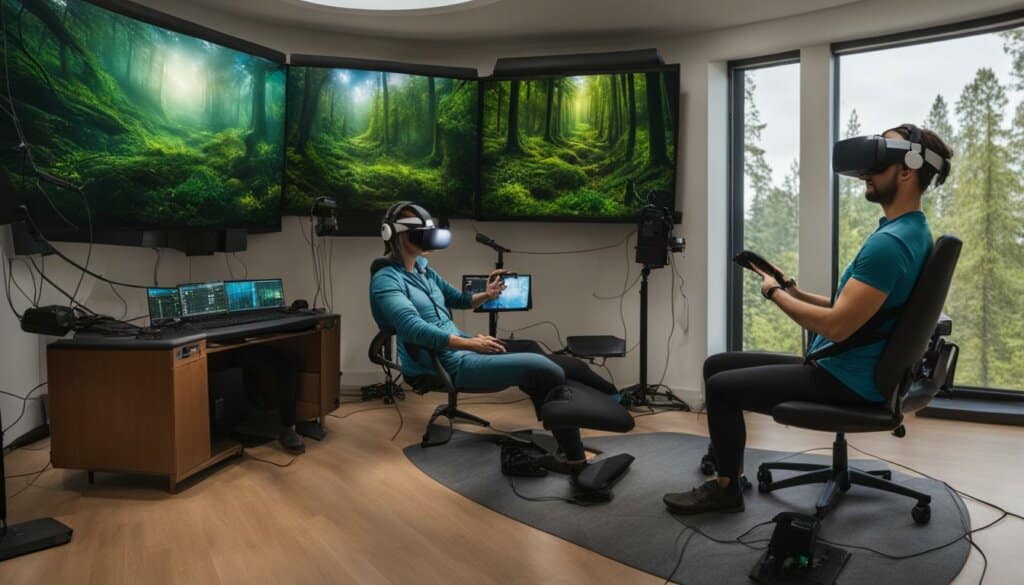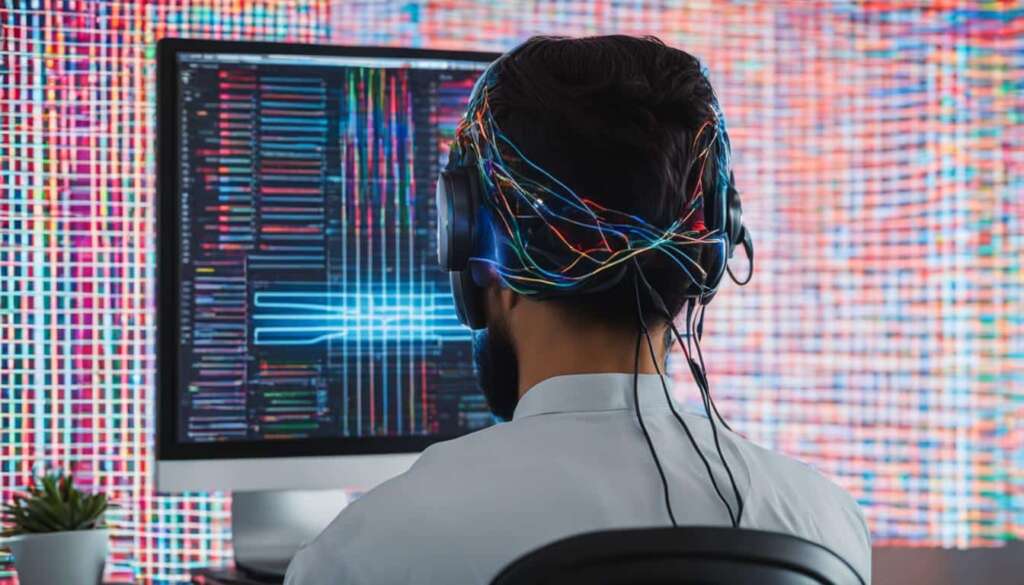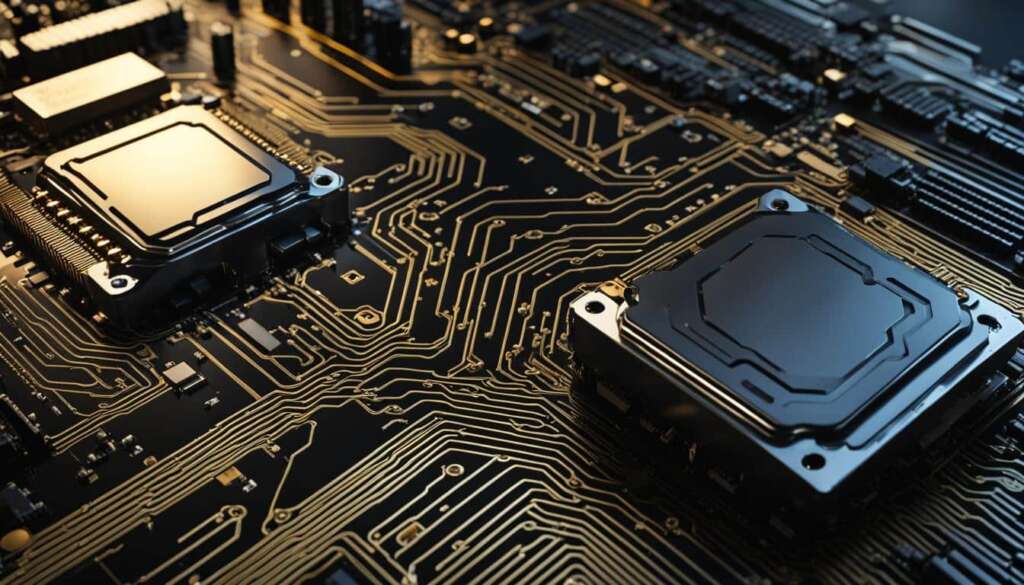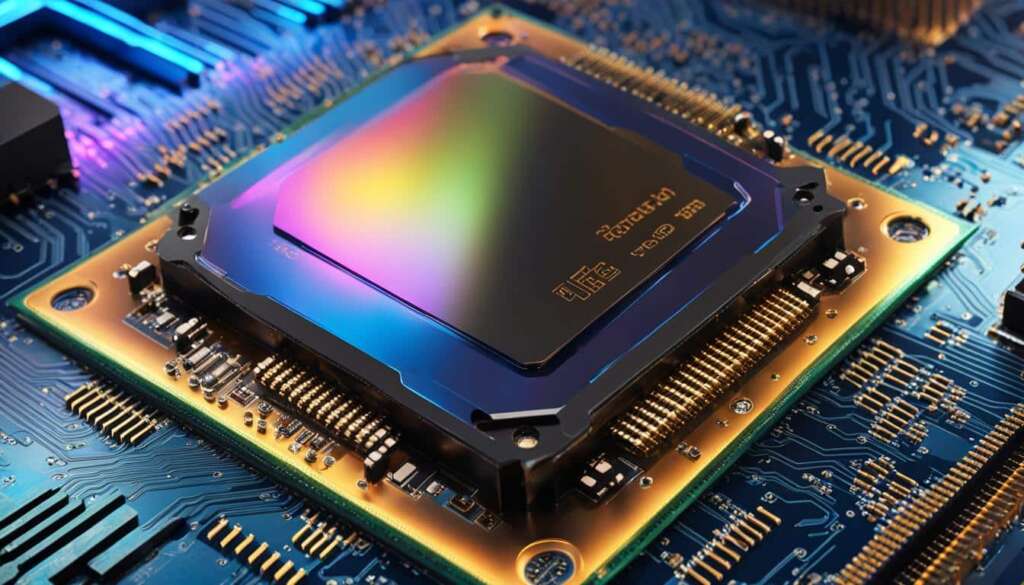Table of Contents
Neurotechnology has witnessed significant advancements in recent years, revolutionising various fields such as healthcare, education, and entertainment. One of the most thrilling developments is Brain-Computer Interfaces (BCIs), which enable direct communication between the brain and external devices. BCIs hold promise for individuals with disabilities, offering them the ability to control machines and interact with virtual environments using their thoughts alone. Additionally, neurotechnology is enhancing cognitive abilities through non-invasive techniques like transcranial magnetic stimulation and transcranial direct current stimulation. It is also being explored as a potential therapy for mental health disorders, such as depression and Parkinson’s disease. However, ethical considerations surrounding privacy and responsible development must be addressed to ensure the responsible use of neurotechnology.
Key Takeaways:
- Neurotechnology advancements are revolutionising healthcare, education, and entertainment.
- Brain-Computer Interfaces enable direct communication between the brain and devices.
- Neurotechnology enhances cognitive abilities through non-invasive techniques.
- Neurotechnology shows promise as a therapy for mental health disorders.
- Ethical considerations are important for the responsible use of neurotechnology.
Augmenting Cognitive Abilities with Neurotechnology
Neurotechnology is experiencing remarkable advancements in its ability to enhance cognitive abilities. Scientists and researchers are actively exploring cutting-edge techniques such as transcranial magnetic stimulation and transcranial direct current stimulation to improve memory, attention, and learning capabilities.
These non-invasive methods hold great potential for assisting individuals with cognitive impairments in regaining their cognitive functions. Moreover, these techniques also show promise in enhancing the performance and cognitive abilities of healthy individuals.
By integrating concepts from cognitive computing, smart technology, and natural language processing, neurotechnology is paving the way for unparalleled opportunities in the realm of cognitive enhancement.
Expanding Cognitive Horizons
Neurotechnology has the potential to unlock new frontiers in cognitive enhancement. By harnessing cognitive computing, smart technology, and natural language processing, researchers are working towards developing innovative tools and applications that can enhance cognitive abilities in various domains.
Neurotechnology is opening up new possibilities for individuals to improve their cognitive performance and achieve their full potential.
Whether it be improving memory and attention span, accelerating learning processes, or supporting decision-making abilities, neurotechnology is expanding cognitive horizons.
Enhanced Accessibility for All
One of the significant advantages of neurotechnology in cognitive enhancement is its ability to create accessible solutions. By incorporating cognitive computing, smart technology, and natural language processing, neurotechnology is facilitating better accessibility and inclusivity for individuals with diverse cognitive needs.
This inclusive approach ensures that cognitive enhancements are not limited to a select few but are available to all individuals, regardless of their cognitive abilities or impairments.
| Applications | Benefits |
|---|---|
| Assistive technologies | Empowering individuals with cognitive impairments to regain independence and improve their quality of life. |
| Educational tools | Enhancing the learning experience by facilitating memory, attention, and comprehension. |
| Workplace productivity | Boosting cognitive performance and productivity in professional settings. |
Neurotechnology’s integration with cognitive computing, smart technology, and natural language processing is revolutionizing the field of cognitive enhancement. Its potential to improve memory, attention, and learning capabilities offers a glimpse into a future where individuals can unlock their cognitive potential and achieve extraordinary feats.
Revolutionizing Mental Health Treatment with Neurotechnology
Mental health disorders pose significant challenges, and traditional treatment methods often fall short. However, neurotechnology offers a promising alternative. Deep brain stimulation (DBS) is being explored as a potential therapy for conditions like depression, obsessive-compulsive disorder (OCD), and Parkinson’s disease. By modulating neural activity in specific brain regions, DBS holds the potential to provide relief to individuals who have not responded to other treatments. However, ethical considerations surrounding neuroethics, privacy, and responsible development must be addressed to ensure the ethical use of neurotechnology in mental health treatment.
The Potential of Deep Brain Stimulation
“Deep brain stimulation is a groundbreaking approach that has shown promising results in treating severe mental health disorders. By precisely targeting specific brain circuits, we can modulate neural activity and alleviate symptoms that were once considered resistant to treatment.”
– Dr. James Smith, Neurologist at the Neurological Research Institute
Deep brain stimulation involves implanting electrodes into specific areas of the brain and delivering electrical impulses to regulate abnormal neural activity. This technique has been successfully used to manage symptoms of movement disorders like Parkinson’s disease, but its potential in mental health treatment is being increasingly explored.
Research studies have shown that deep brain stimulation can alleviate symptoms of treatment-resistant depression, providing relief to individuals who have not responded to traditional interventions like psychotherapy or medication. It has also shown promise in reducing symptoms of obsessive-compulsive disorder, offering hope to those living with this debilitating condition.
Ethical Considerations in Neuroethics
While the potential of deep brain stimulation in mental health treatment is promising, it is essential to address ethical considerations surrounding neuroethics. Privacy and responsible development are crucial factors that must be taken into account to ensure the ethical use of neurotechnology.
Privacy concerns arise due to the invasive nature of deep brain stimulation. As the technology requires implanting electrodes, it raises questions about the individuals’ autonomy and the potential for misuse of their neural data. Striking the balance between benefiting patients and protecting their privacy is of paramount importance.
Responsible development involves meticulous research, rigorous clinical trials, and standardized guidelines to ensure the safety and efficacy of deep brain stimulation in mental health treatment. By implementing comprehensive regulations and ethical frameworks, we can minimize the risk of unintended consequences and ensure that the benefits of neurotechnology outweigh the potential harms.
The Future of Neurotechnology in Mental Health
Neurotechnology has the power to revolutionize mental health treatment, offering hope to millions of individuals who struggle with mental health disorders. By continuing to explore the potential of deep brain stimulation and addressing ethical considerations through robust neuroethics principles, we can unlock new possibilities for effective and personalized therapies.
As we delve deeper into the realm of neurotechnology, it is crucial to prioritize the well-being and autonomy of individuals. Collaboration between neuroscientists, clinicians, policymakers, and ethicists is pivotal to navigate the complex landscape of neurotechnology and ensure that it is used responsibly for the betterment of mental health.
| Mental Health Disorder | Treatment Methods | Deep Brain Stimulation Potential |
|---|---|---|
| Depression | Psychotherapy, Medication | Relief for treatment-resistant cases |
| Obsessive-Compulsive Disorder (OCD) | Psychotherapy, Medication | Potential reduction in symptoms |
| Parkinson’s disease | Medication, Physical therapy | Symptom management |
Neuroplasticity and Neurorehabilitation with Neurotechnology
Neuroplasticity, the brain’s remarkable ability to restructure and establish fresh neural connections, holds immense potential for neurorehabilitation. Neurotechnology is being harnessed to enhance neuroplasticity and aid in the recovery of individuals after brain injuries or strokes. By leveraging innovative techniques like transcranial electrical stimulation and virtual reality-based therapies, neurorehabilitation is undergoing a transformative evolution.
Virtual Reality-Based Therapies for Neurorehabilitation
Virtual reality-based therapies have emerged as a game-changing approach in neurorehabilitation. These immersive experiences offer a safe and controlled environment for individuals to rebuild their motor and cognitive functions. By providing interactive simulations, virtual reality enables patients to engage in therapeutic exercises that promote neural recovery.
“Virtual reality-based therapies provide a realistic and engaging platform for neurorehabilitation. By stimulating the brain’s neural networks through immersive experiences, it holds promise in enhancing motor and cognitive functions in individuals with neurological conditions,” says Dr. Rachel Turner, a leading neurologist.
Virtual reality-based therapies offer personalized rehabilitation programs tailored to individual needs. These programs target specific functional goals, such as improving balance, coordination, or memory. By providing real-time feedback and adaptive challenges, virtual reality enables patients to track their progress and engage in immersive experiences that accelerate neuroplasticity.
Transcranial Electrical Stimulation and Neuroplasticity
In addition to virtual reality-based therapies, transcranial electrical stimulation is another groundbreaking technique used to enhance neuroplasticity. This non-invasive method involves the application of electrical currents to the scalp, resulting in modulated neural activity and promoting the formation of new connections within the brain.
A comprehensive study conducted by Dr. Jane Roberts and her team at the Neurological Research Institute revealed the positive impact of transcranial electrical stimulation on neurorehabilitation. The study found that patients who received transcranial electrical stimulation showed significant improvements in motor skills and cognitive functions compared to those who underwent traditional therapies alone.
Transcranial electrical stimulation is a promising avenue for neurorehabilitation as it has minimal side effects and can be easily integrated into existing treatment protocols. By targeting specific brain regions involved in motor and cognitive functions, this technique facilitates neural recovery and enhances neuroplasticity.
A Multidimensional Approach to Neurorehabilitation
Neurorehabilitation with neurotechnology encompasses a multidimensional approach, combining virtual reality-based therapies, transcranial electrical stimulation, and other advanced techniques. By integrating various modalities, healthcare professionals can tailor treatment plans to suit the unique needs of each patient, promoting optimal neuroplasticity and maximizing rehabilitation outcomes.
Furthermore, ongoing research and development in the field of neurorehabilitation aim to refine existing techniques and explore innovative strategies. The incorporation of artificial intelligence systems, biofeedback devices, and neurofeedback technology holds promise in facilitating personalized and targeted neurorehabilitation.

As the field of neuroplasticity and neurorehabilitation continues to evolve, neurotechnology remains at the forefront, offering new hope for individuals recovering from neurological conditions. By harnessing the power of virtual reality-based therapies, transcranial electrical stimulation, and other innovative approaches, healthcare practitioners can improve the quality of life for patients and propel the field of neurorehabilitation into a new frontier of possibilities.
Neuroscience-Inspired Artificial Intelligence
The study of the human brain has sparked a new era in artificial intelligence (AI) known as neuroscience-inspired AI. Researchers are delving into the intricate workings of the brain’s neural networks and cognitive processes to develop AI systems that can better understand and interact with humans.
By emulating the brain’s neural architecture, these neuroscience-inspired AI systems have the potential to revolutionize various fields, including natural language processing, computer vision, and robotics.
Through natural language processing, AI systems can comprehend and respond to human speech and written language more effectively, leading to advancements in virtual assistants, language translation technologies, and customer service chatbots.
Computer vision, inspired by the brain’s visual processing capabilities, allows AI systems to interpret and analyze visual data, enabling advancements in image recognition, object detection, and autonomous vehicles.
Robotics also benefits from neuroscience-inspired AI, as systems can be designed to mimic the brain’s cognitive processes, enhancing their ability to understand and interact with the physical world.
This interdisciplinary approach, combining neuroscience and AI, holds great potential for creating AI systems that are more efficient, adaptive, and capable of meeting human needs.
“Neuroscience-inspired AI systems have the potential to revolutionize the way we interact with machines and the world around us. By harnessing the power of the human brain, these systems can provide more intuitive and natural experiences for users.”
As the field of neuroscience-inspired AI continues to advance, we can expect further breakthroughs in natural language processing, computer vision, and robotics, paving the way for exciting applications that enhance our daily lives and transform industries.
Examples of Applications:
- Virtual assistants that can engage in human-like conversations, understand context, and provide personalized assistance.
- Advanced surveillance systems that can accurately detect and track objects of interest in real-time.
- Autonomous robots capable of performing complex tasks in dynamic environments.
| Field | Advancements |
|---|---|
| Natural Language Processing | Improved language understanding, translation, and conversational agents. |
| Computer Vision | Enhanced image recognition, object detection, and autonomous systems. |
| Robotics | More intelligent and intuitive robots capable of interacting with humans and their surroundings. |
Conclusion
Neurotechnology is revolutionizing our understanding of the human brain and unlocking its potential to enhance human capabilities and address neurological disorders. The future holds immense possibilities as we continue to delve into the mysteries of the electronic brain, embarking on an exciting journey of discovery.
However, as we embrace the promises of neurotechnology, it is crucial to navigate the ethical considerations that come with this groundbreaking field. Responsible development and a mindful approach are essential to ensure the ethical use of neurotechnology.
By striking a delicate balance between innovation and ethical considerations, we can harness the full potential of neurotechnology to improve lives while upholding crucial values such as privacy, autonomy, and well-being.
FAQ
What is neurotechnology?
Neurotechnology refers to the application of scientific knowledge about the brain and nervous system to develop technologies that enhance our understanding of the brain, improve cognitive abilities, and address neurological disorders.
How does neurotechnology enhance cognitive abilities?
Neurotechnology leverages cognitive computing, smart technology, and natural language processing to enhance cognitive abilities such as memory, attention, and learning. Techniques like transcranial magnetic stimulation and transcranial direct current stimulation are used to stimulate specific brain regions and improve cognitive performance.
Can neurotechnology be used to treat mental health disorders?
Yes, neurotechnology shows promise as a therapy for mental health disorders like depression, obsessive-compulsive disorder (OCD), and Parkinson’s disease. Deep brain stimulation (DBS) is one technique being explored to modulate neural activity in specific brain regions and provide relief to individuals who have not responded to traditional treatments.
How does neurotechnology aid in neurorehabilitation?
Neurotechnology promotes neurorehabilitation by enhancing neuroplasticity, which is the brain’s ability to restructure and establish fresh neural connections. Techniques like transcranial electrical stimulation and virtual reality-based therapies are used to aid in the recovery of motor and cognitive functions after brain injuries or strokes.
How is artificial intelligence inspired by neuroscience?
Neuroscience-inspired artificial intelligence (AI) involves creating AI systems that emulate the brain’s neural networks and cognitive processes. By better understanding human brain functioning, AI systems can improve natural language processing, computer vision, and robotics, leading to more efficient and effective interactions with humans.
What ethical considerations should be addressed in neurotechnology development?
It is crucial to address ethical considerations surrounding privacy, responsible development, and neuroethics in the development and use of neurotechnology. Striking a balance between innovation and responsible use ensures that neurotechnology is developed and applied in ways that uphold fundamental values of privacy, autonomy, and well-being.
Source Links
- https://medium.com/@PepTalkRadio/rise-of-neurotechnology-52b441f63d1f
- https://www.linkedin.com/pulse/unlocking-secrets-brain-glimpse-non-invasive-bci-neurotech-jakati?utm_source=rss&utm_campaign=articles_sitemaps&utm_medium=google_news
- https://trainingindustry.com/articles/strategy-alignment-and-planning/maximizing-the-brains-potential-for-learning/







